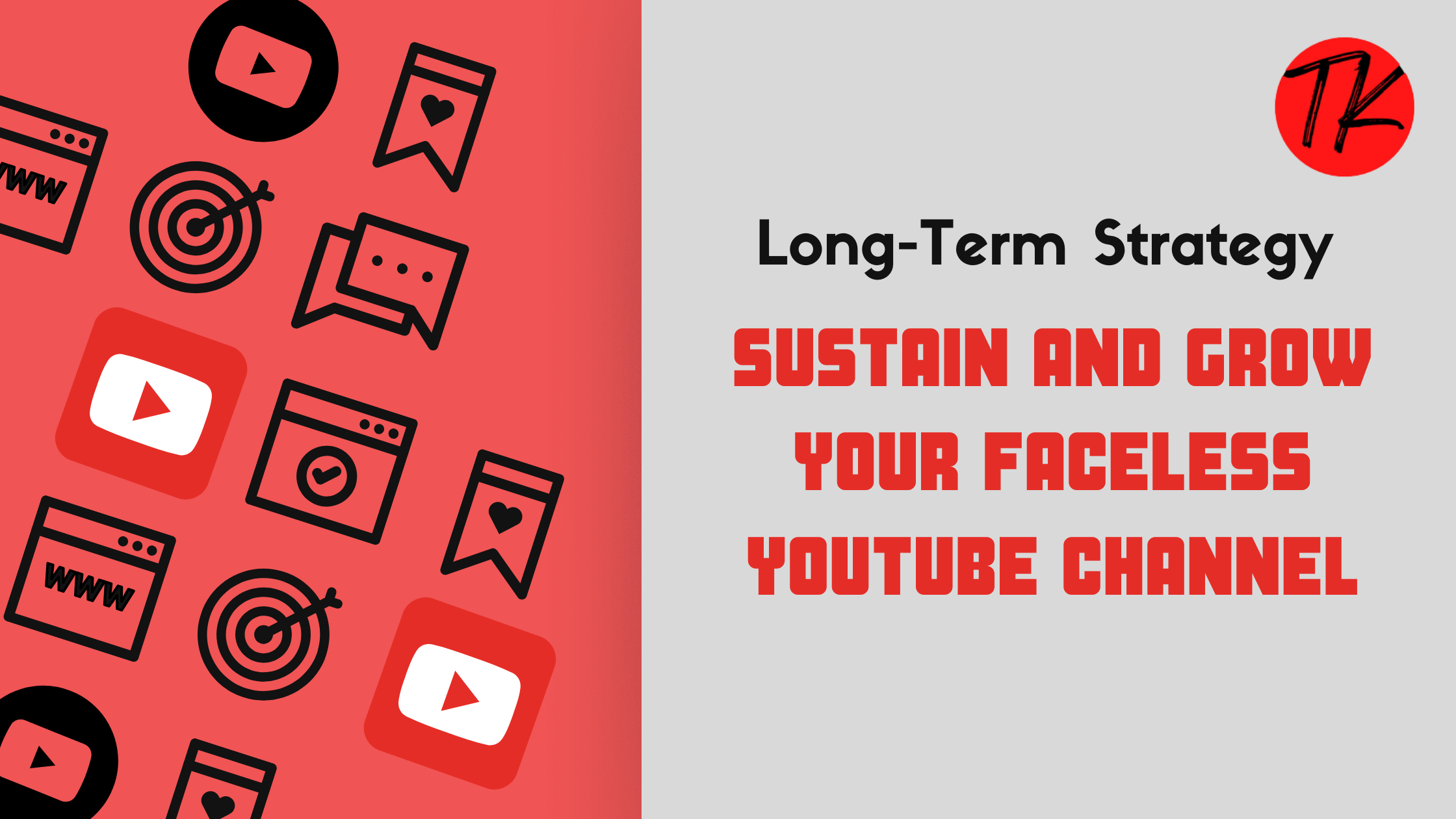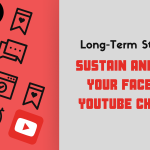Building a faceless YouTube channel is just the beginning. To maintain success and continue growing, you need a long-term strategy. Many channels experience rapid growth but then decline because they fail to adapt, improve, or diversify.
This guide covers:
- Consistent Content Strategy
- Advanced YouTube SEO Techniques
- Diversifying Revenue Streams
- Community Building and Engagement
- Staying Updated with Trends
- Avoiding Common Pitfalls
Table of Contents
Step 1: Maintain a Consistent Content Strategy for Faceless Youtube Channel
Consistency is key to keeping your audience engaged and the YouTube algorithm in your favor. Successful channels follow a structured content strategy to maintain and grow their reach.
1.1 Create a Content Calendar
- Plan video topics at least one month in advance
- Stick to a consistent posting schedule (e.g., 2 videos per week)
- Batch produce content to avoid last-minute stress
1.2 Improve Content Quality Over Time
- Analyze your best-performing videos and replicate their success
- Upgrade video production tools, AI software, or editing techniques
- Experiment with new formats, such as storytelling, case studies, or deep-dive analysis
1.3 Balance Evergreen and Trending Content
- Evergreen videos generate long-term traffic (e.g., “Best AI Tools for YouTubers”)
- Trending videos bring quick spikes in views (e.g., “New YouTube Algorithm Update Explained”)
Step 2: Master Advanced YouTube SEO for Faceless Youtube Channel
SEO optimization ensures your videos rank higher, leading to more views and revenue.
2.1 Do Keyword Research
- Use tools like TubeBuddy, VidIQ, or Ahrefs to find low-competition keywords
- Check competitor video titles and tags for inspiration
- Target both high-traffic and long-tail keywords
2.2 Optimize Video Titles, Descriptions, and Tags
- Use attention-grabbing titles with a primary keyword
- Write keyword-rich descriptions with timestamps and links
- Add relevant tags to improve search visibility
2.3 Focus on High Engagement Metrics
- Increase watch time by keeping videos engaging from start to finish
- Use pattern interrupts, such as quick edits, graphics, and changes in tone
- Encourage likes, comments, and shares to boost algorithm ranking
Step 3: Diversify Revenue Streams for Stability
Relying only on YouTube ad revenue is risky. Successful faceless YouTubers have multiple income sources.
3.1 Expand Affiliate Marketing
- Find high-ticket affiliate products with better commissions
- Create tutorials or product comparison videos that naturally promote these links
3.2 Develop Your Own Digital Products
- Sell YouTube templates, e-books, or AI-generated voiceover packs
- Offer exclusive guides or mini-courses for a one-time fee
3.3 Launch a Subscription Model
- Enable YouTube Memberships for exclusive content
- Set up a Patreon or Buy Me a Coffee page for monthly supporters
3.4 Monetize with Sponsorships
- Reach out to brands directly instead of waiting for offers
- Offer different sponsorship packages, including full-video sponsorships and product mentions
Step 4: Build an Engaged Community
YouTube favors channels that foster audience engagement. Building a loyal community helps with long-term sustainability.
4.1 Encourage Audience Interaction
- Ask thought-provoking questions in your videos
- Pin and reply to top comments to boost engagement
- Create polls in the YouTube Community Tab
4.2 Utilize Email Marketing
- Collect emails by offering a free resource (e.g., “Download My Free YouTube Growth Checklist”)
- Use an email list to promote new videos, affiliate products, and digital courses
4.3 Expand to Other Platforms
- Repurpose YouTube videos into blog posts for SEO traffic
- Upload video clips to TikTok, Instagram Reels, and Facebook for broader reach
- Start a Discord or Facebook group to connect with your audience
Step 5: Stay Updated with YouTube Trends and Changes
YouTube is constantly evolving. Keeping up with changes can help you stay ahead of competitors.
Read on Metricool
5.1 Follow YouTube Creator Updates
- Subscribe to the YouTube Creator Blog for policy changes
- Join creator communities to discuss new trends and algorithm shifts
5.2 Experiment with New Video Formats
- Test YouTube Shorts to see if it drives extra traffic
- Try live streams, Q&A videos, or behind-the-scenes content
- Adapt to AI-driven video editing tools for efficiency
5.3 Watch Your Competitors Closely
- Analyze competitors’ most successful videos and identify trends
- Look at their comment sections to find audience needs and unanswered questions
Step 6: Avoid Common Pitfalls That Kill Faceless Channels
Many faceless YouTube channels fail because they make the following mistakes.
6.1 Ignoring Video Analytics
- Regularly check YouTube Studio analytics to see what’s working
- Identify drop-off points in videos to improve audience retention
6.2 Relying on Just One Monetization Source
- Ad revenue fluctuates—always have multiple income streams
6.3 Not Reinvesting Profits
- Use earnings to hire a better video editor, upgrade AI tools, or create a second channel
6.4 Producing Low-Quality or Spammy Content
- Avoid overusing AI-generated content without human editing
- Make sure each video adds value to the audience
Conclusion
A faceless YouTube channel can provide long-term passive income, but it requires consistent effort, SEO mastery, audience engagement, and revenue diversification.
Key Takeaways:
- Maintain a consistent content strategy and balance evergreen/trending videos
- Optimize videos for YouTube SEO using proper keywords and engagement techniques
- Diversify income streams through affiliate marketing, digital products, and sponsorships
- Build a loyal community through email marketing and cross-platform engagement
- Stay updated with YouTube algorithm changes and trends
- Avoid common mistakes like poor analytics tracking and relying only on ads
With the right long-term strategy, your faceless YouTube business can continue to grow and generate passive income for years to come.
Learn More:
How to Automate and Scale Your Faceless YouTube Channel for Passive Income










